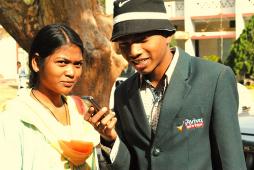Voice
Posted by AnneryanHeatwole on Nov 07, 2011
How can you share information across rural areas with limited or non-existent Internet connections? This is the question that Awaaz.De, an India-based organization that uses interactive-voice-response (IVR) systems to share information on mobile phones, is working to answer.
Co-created by Neil Patel and Tapan Parikh, both at the University of California at Berkeley, Awaaz.De is used by organizations to share information with voice as the primary channel. This could, for instance, take the form of a question and answer service, voice discussion forums, voice surveys, and automated calls.
Because of the open-ended structure of the Awaaz.De platform, the platform has been adapted by very different organizations. Labor Voices uses Awaaz.De to allow migrant workers to review jobs and employers in a voice database; the Development Support Centre uses the service to provide information to small-scale farmers as part of the Avaaj Otalo project (covered by MobileActive.org here), and Galli Galli Sim Sim (the Indian version of Sesame Street) uses the service to allow pre-school teachers to share teaching experiences and information about educational activities.
According to Patel in a post on the ICT 4 Community Health Worker discussion list, there are now eight organizations using Awaaz.De. These organizations have, together, produced more than 100,000 calls from about 10,000 unique callers.
| Calling It In: Awaaz.De Provides A Voice-Based Information Platform data sheet 1667 Views |
| Countries: |
India
|
Posted by neilp on Nov 04, 2011
Awaaz.De data sheet 1422 Views
Organization that developed the Tool:
Problem or Need:
The Internet has enabled people from all over the globe to communicate and share information. Yet over two-thirds of the world’s population remains disconnected from the Internet, and many of these people live in poor, remote areas in the developing world. Organizations struggle to cross the last mile to these communities that are difficult to reach geographically, are often only fluent in local languages, lack reading and writing proficiency, and have limited experience with information technology. Unidirectional broadcast media such as the radio, television, and written periodicals can be localized to a region or community, but they are not micro-local, demand-driven, and do not offer transparent space for feedback and community discussion. Local people may seek information from experts or others in their personal social networks, but misinformation abounds and advice is fragmented across multiple sources. There are few comprehensive, on-demand sources for relevant, high-quality knowledge. This is precisely what the Internet provides for those who have access.
Brief Description:
Awaaz.De (“Give your voice”) is a software platform enabling organizations to engage with poor, remote, and marginal communities by providing on-demand, many-to-many information access through mobile phones. People access Awaaz.De applications by dialing regular phone numbers to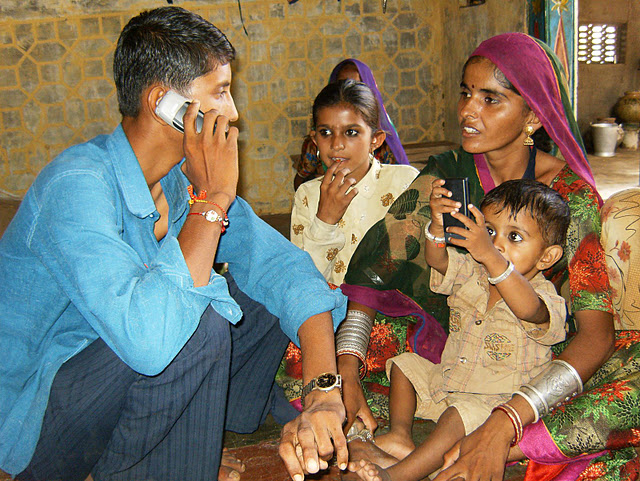 create, browse, and share voice content through automated voice interfaces. Voice makes it easy to provide services in local languages, overcomes literacy constraints, and offers a low barrier to content creation: one only needs to know how to speak into a phone. Organizations use Awaaz.De to host voice-based information portals, discussion forums, Q&A services, classifieds, and more. For example, rural development organizations can offer demand-driven agricultural extension through a farmer Q&A service, broadcast market prices and weather reports targeted by crop and location, or perform real-time data collection on availability of farm inputs and outputs. In this way, Awaaz.De helps organizations reach previously disconnected people with on-demand, locally relevant information, in their language. Most importantly, Awaaz.De is a social platform that supports people to give their own voice and participate not just as passive consumers, but active producers of knowledge.
create, browse, and share voice content through automated voice interfaces. Voice makes it easy to provide services in local languages, overcomes literacy constraints, and offers a low barrier to content creation: one only needs to know how to speak into a phone. Organizations use Awaaz.De to host voice-based information portals, discussion forums, Q&A services, classifieds, and more. For example, rural development organizations can offer demand-driven agricultural extension through a farmer Q&A service, broadcast market prices and weather reports targeted by crop and location, or perform real-time data collection on availability of farm inputs and outputs. In this way, Awaaz.De helps organizations reach previously disconnected people with on-demand, locally relevant information, in their language. Most importantly, Awaaz.De is a social platform that supports people to give their own voice and participate not just as passive consumers, but active producers of knowledge.
Currently Awaaz.De serves eight social development organizations and enterprises across six states in India working in agriculture, education, women’s empowerment, labor rights, and rural products. These organizations serve as content providers, and use Awaaz.De to disseminate their informational content in real time, as well as collect input from the community through interactive features. These organizations have proven the value of Awaaz.De through willingness to pay; partners pay a recurring monthly fee to host their customized voice information service with Awaaz.De
The other demonstration of Awaaz.De’s value comes through the response from the communities of users. To date, Awaaz.De has served over 100,000 calls from over 10,000 unique callers. People rate content highly whenever ratings are solicited; in one deployment, the average rating was 2.8/3 from 325 individual ratings. A bit more anecdotally, unsolicited messages of praise and gratitude come in regularly from people. In a study where an Awaaz.De partner sent agricultural information broadcasts to farmers and then prompted for a question or comment, 37% of the recordings posted were simply comments of praise for the service, compared to 41% posts asking technical agricultural questions. To us, these are small indicators of Awaaz.De's potential for not only building knowledge capital, but social capital. Here’s another good anecdotal example.
Tool Category:
App resides and runs on a mobile phone
Key Features :
Awaaz.De’s technology platform consists of two components. First, the voice application lets 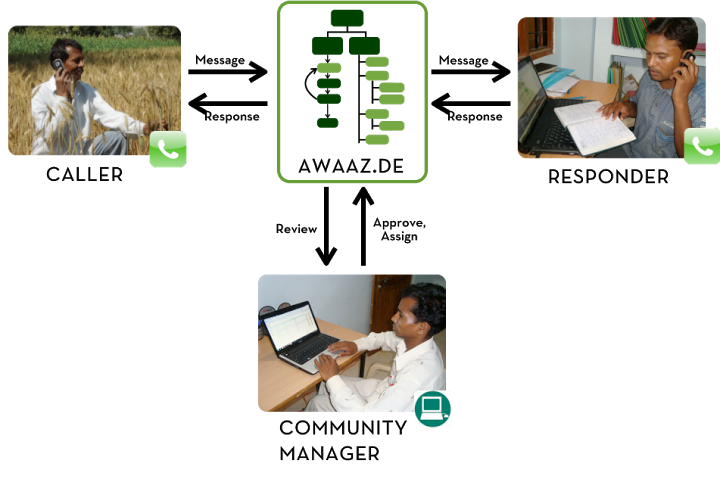 end-users access content through regular phone numbers. After calling in, they navigate automated message boards with touchtone to create, browse, and respond to voice messages posted by others. A “personal inbox” option plays the caller’s own messages, identified by their phone number. Message boards are configured with a number of policy settings. A message board can be listen or post-only, moderated, and allow community response. It can also define sub-message boards based on hierarchical categories. Awaaz.De’s second component is a web interface that lets community managers moderate the voice forums, annotate and categorize content, route messages to specific experts for responding, conduct voice-based surveys, collect ratings, and broadcast the best content to wide (e.g. last 1,000 callers) or targeted (e.g. all callers who have posted messages related to wheat) audiences. Taken together, the two components of Awaaz.De provide an “Internet for the few, voice for the many” model, where the mostly Internet-less community members access content and communicate through mobile voice interfaces, and community managers with access to the Internet administer the system through the web interface.
end-users access content through regular phone numbers. After calling in, they navigate automated message boards with touchtone to create, browse, and respond to voice messages posted by others. A “personal inbox” option plays the caller’s own messages, identified by their phone number. Message boards are configured with a number of policy settings. A message board can be listen or post-only, moderated, and allow community response. It can also define sub-message boards based on hierarchical categories. Awaaz.De’s second component is a web interface that lets community managers moderate the voice forums, annotate and categorize content, route messages to specific experts for responding, conduct voice-based surveys, collect ratings, and broadcast the best content to wide (e.g. last 1,000 callers) or targeted (e.g. all callers who have posted messages related to wheat) audiences. Taken together, the two components of Awaaz.De provide an “Internet for the few, voice for the many” model, where the mostly Internet-less community members access content and communicate through mobile voice interfaces, and community managers with access to the Internet administer the system through the web interface.

Main Services:
Interactive Voice Response (IVR)
Voting, Data Collection, Surveys, and Polling
Mobile Social Network/Peer-to-peer
Information Resources/Information Databases
Organizations Using the Tool:
Awaaz.De is currently being used by eight organizations across six states in India. For their project descriptions, visit this page.
Number of Current End Users:
Number of current beneficiaries:
Is the Tool's Code Available?:
Is an API available to interface with your tool?:
Posted by abhigyan on Nov 17, 2010
Design Opportunities and Challenges in Indian Urban Slums - Community Communication and Mobile Phones data sheet 2645 Views
Abstract:
The aim of this master’s thesis is to identify design challenges and opportunities for mobile based community communication services for marginalized communities belonging to Indian urban slums.
The thesis is based on two ethnographic field studies done in urban slums of India and it is grounded in the conceptual frameworks of Community Informatics, Communicative Ecology and Communities of Practices. This qualitative research is best identified as participatory bottom-up exploration.
In the context of Indian urban slums, this thesis discusses the existing practices of mobile phone's use, identifies the 'Human Nodes' of community communication, presents design opportunities and challenges for community communication services, and proposes a design concept called 'Asynchronous Voice based Community Communication Service'.
Posted by KatrinVerclas on Sep 20, 2010
We have been very keen on exposing the security issues related to mobile communications for activists in insecure environments. To that end we have, to date, produced a number of how-to guides that evaluate some of the tools available.
A little while ago, we added a matrix of available tools that compares existing applications for secure communications more systematically. So, here is the line-up of mobile security resources on MobileActive for easy reference:
We will continue to pay close attention to this space as there are not enough tools and resources yet for activists and journalists to communicate securely via mobile. If you are aware of other projects or resources, please add a comment!
Photo courtesy: rafeblandford via flickr
Posted by PrabhasPokharel on Jul 09, 2010
We have another new case study up where we report on an innovative audio-based citizen journalism project in Chhattisgarh, India. Tribal citizen journalists have been reporting news in their own languages through a new service called CGNet Swara. CGNet stands for Chhattisgarh Net). The service allows citizen journalists to call in and record news in one of four local languages. The news that has been produced has been picked up in India's mainstream media, and some reports have led to concrete action: in one case, teachers whose salaries hadn't been paid for months were paid after a news report elicited a calling campaign from listeners. We've previously mentioned the project in a short blog post. This much more extensive case study is a part of some work we have been doing on citizen media projects using audio, radio, and mobile
| Have Your Say with CGNet Swara - Tribal Citizen Media in India. A New Case Study data sheet 3019 Views |
| Countries: |
India
|
Posted by StephanieMilbergs on Jun 01, 2010
Bubbly data sheet 4758 Views
Organization that developed the Tool:
Problem or Need:
People want to communicate ideas or messages using their voices. Bubbly enables users to send voice messages to multiple followers.
Brief Description:
Bubbly is a voice-blogging service for mobile phones where individuals and celebrities record voice updates heard by friends, family, fans and followers. Bubbly is like Twitter with a voice and is bringing social networking to mobile phones. Bubbly's mobile operator partners include: Airtel, Vodafone, Turkcell, Digi, Indosat, AIS, CSL/New World Mobility.
Tool Category:
App resides and runs on a mobile phone
Key Features :
Venturebeat has covered Bubbly and the service has gained 500,000 users in India. "Bubbly is cell phone service that aims to bring social media to the masses. It builds on the foundation set by Bubble Talk, which has 100 million users who use the service to send voice messages to on other individuals. With Bubbly, messages go to a bigger audience — followers." By offering features that drive phone usage (text and voice), operators are able to use Bubble Motion to drive new sources of revenues that have previously been untapped.
Main Services:
Mobile Social Network/Peer-to-peer
Organizations Using the Tool:
Support Forums:
http://www.bubblemotion.com/tips-for-voice-blogging.html
Is the Tool's Code Available?:
Is an API available to interface with your tool?:
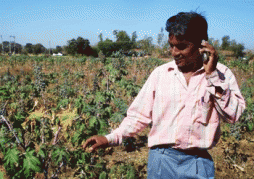
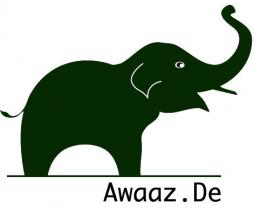

 end-users access content through regular phone numbers. After calling in, they navigate automated message boards with touchtone to create, browse, and respond to voice messages posted by others. A “personal inbox” option plays the caller’s own messages, identified by their phone number. Message boards are configured with a number of policy settings. A message board can be listen or post-only, moderated, and allow community response. It can also define sub-message boards based on hierarchical categories. Awaaz.De’s second component is a web interface that lets community managers moderate the voice forums, annotate and categorize content, route messages to specific experts for responding, conduct voice-based surveys, collect ratings, and broadcast the best content to wide (e.g. last 1,000 callers) or targeted (e.g. all callers who have posted messages related to wheat) audiences. Taken together, the two components of Awaaz.De provide an “Internet for the few, voice for the many” model, where the mostly Internet-less community members access content and communicate through mobile voice interfaces, and community managers with access to the Internet administer the system through the web interface.
end-users access content through regular phone numbers. After calling in, they navigate automated message boards with touchtone to create, browse, and respond to voice messages posted by others. A “personal inbox” option plays the caller’s own messages, identified by their phone number. Message boards are configured with a number of policy settings. A message board can be listen or post-only, moderated, and allow community response. It can also define sub-message boards based on hierarchical categories. Awaaz.De’s second component is a web interface that lets community managers moderate the voice forums, annotate and categorize content, route messages to specific experts for responding, conduct voice-based surveys, collect ratings, and broadcast the best content to wide (e.g. last 1,000 callers) or targeted (e.g. all callers who have posted messages related to wheat) audiences. Taken together, the two components of Awaaz.De provide an “Internet for the few, voice for the many” model, where the mostly Internet-less community members access content and communicate through mobile voice interfaces, and community managers with access to the Internet administer the system through the web interface.
